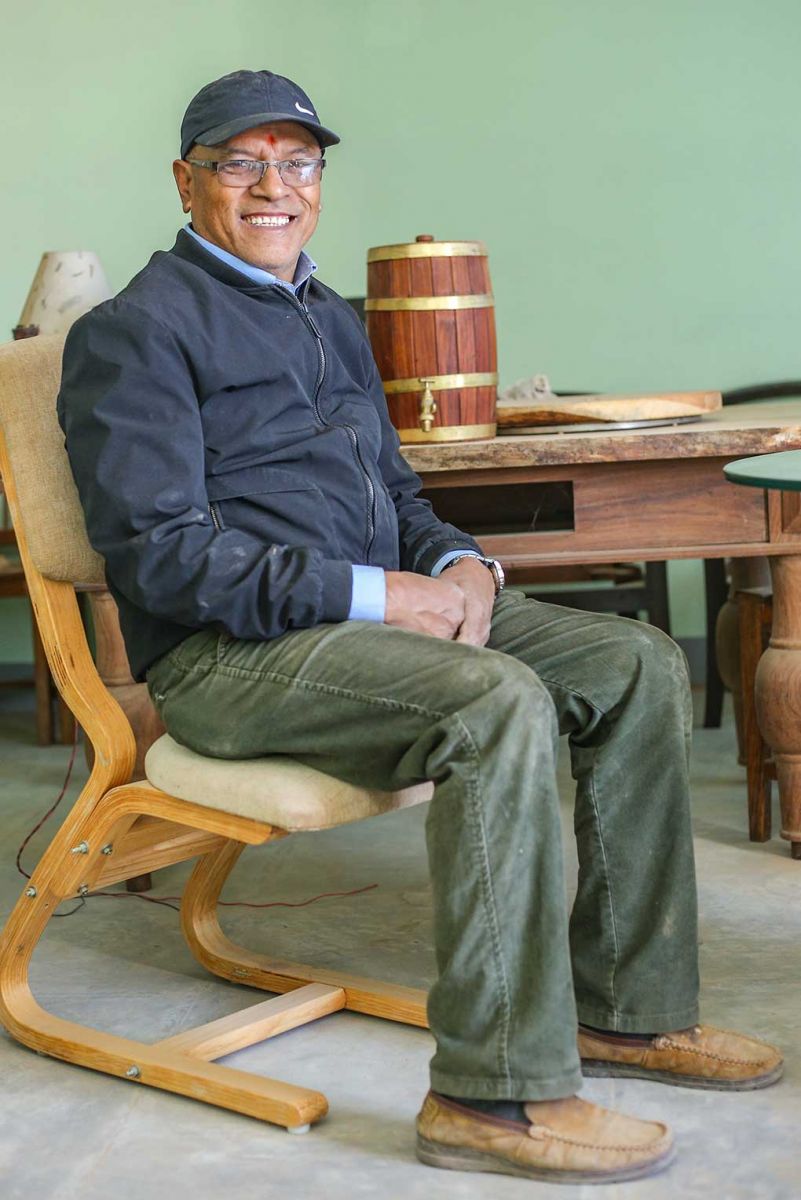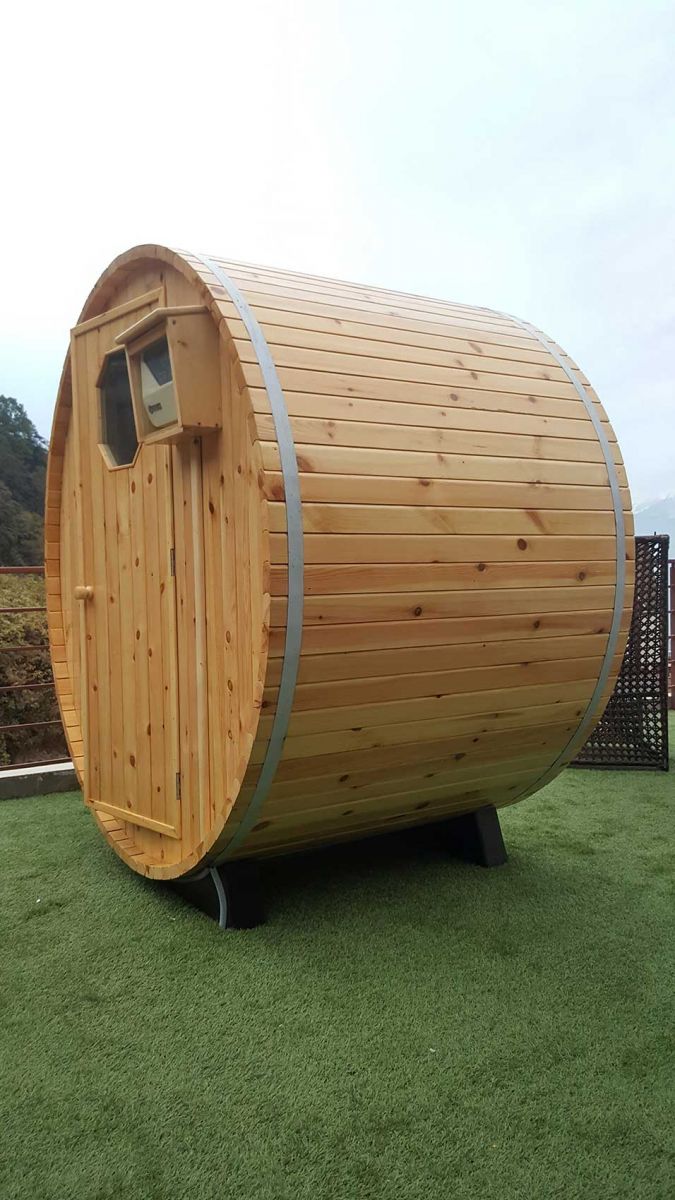 While meeting Raja Ram Shilpakar, anyone is easily charmed by his gentle smile and kind demeanor. But his utter humility belies his staggering creative prowess. He has been working as a wood craftsman from the tender age of 12. Learning the trade from his father, who had got it from his grandfather, the Shilpakars have been wood carvers since the Malla era. Many of the lattice windows and intricately carved doors found in Bhaktapur Durbar Square can be traced back to his predecessors. Well, you can say he is one of the lucky scions of a matchless, priceless craft; a heritage that has come to reflect our national identity. But what is most interesting is that his story does not end here; not quite yet. He has taken his ancient craft and innovated it wonderfully.
While meeting Raja Ram Shilpakar, anyone is easily charmed by his gentle smile and kind demeanor. But his utter humility belies his staggering creative prowess. He has been working as a wood craftsman from the tender age of 12. Learning the trade from his father, who had got it from his grandfather, the Shilpakars have been wood carvers since the Malla era. Many of the lattice windows and intricately carved doors found in Bhaktapur Durbar Square can be traced back to his predecessors. Well, you can say he is one of the lucky scions of a matchless, priceless craft; a heritage that has come to reflect our national identity. But what is most interesting is that his story does not end here; not quite yet. He has taken his ancient craft and innovated it wonderfully.
 Let me give you a glimpse of how his mind works. In his teen years, he was making traditional wooden windows and doors. Then he saw a barrel. He was intrigued. He experimented and made a barrel. At this moment, we do not know if anyone else in Nepal had made hand crafted barrels. He could be a pioneer. Then he thought what else could be done with barrels. He added a tap on it and, voila, a wine barrel! Much later, he watched a You Tube video about saunas. It stuck on his head for quite a while. He experimented again and came up with a sauna in a giant barrel. It was not just a little experiment for him. He really perfected his creation so much so that resorts and hotels have placed orders for his product. At the moment, he is working on making wooden wash basins and faucets. As someone with a restlessly creative mind and uncontainable energy, he went on to produce an alluring array of everyday objects from wood such as ties, combs, hairclips, pens, wine glasses, bowls, plates, cups, spoons, lamps, umbrellas and many more items. In his own words, he makes “anything that can be made from wood.” He even has a project in mind of creating wooden Jacuzzis.
Let me give you a glimpse of how his mind works. In his teen years, he was making traditional wooden windows and doors. Then he saw a barrel. He was intrigued. He experimented and made a barrel. At this moment, we do not know if anyone else in Nepal had made hand crafted barrels. He could be a pioneer. Then he thought what else could be done with barrels. He added a tap on it and, voila, a wine barrel! Much later, he watched a You Tube video about saunas. It stuck on his head for quite a while. He experimented again and came up with a sauna in a giant barrel. It was not just a little experiment for him. He really perfected his creation so much so that resorts and hotels have placed orders for his product. At the moment, he is working on making wooden wash basins and faucets. As someone with a restlessly creative mind and uncontainable energy, he went on to produce an alluring array of everyday objects from wood such as ties, combs, hairclips, pens, wine glasses, bowls, plates, cups, spoons, lamps, umbrellas and many more items. In his own words, he makes “anything that can be made from wood.” He even has a project in mind of creating wooden Jacuzzis.
Right now the market is rife with demand for his work. While he loves to innovate, his main staple is the sale of  furniture. He is encouraged by the rise of domestic demand for his work. There is a growing trend of Nepalese people keeping furniture with traditional elements in their living rooms. However, he is concerned about the cheaper Chinese furniture made with paper that have flooded the market (called compressed wood, it is mainly paper mixed with saw dust and chemicals, with a higher percentage of paper than wood used). But he does point out essential differences between his furniture and the Chinese ones. His pieces are customized to suit the taste and preferences of his clients. (Sometimes, his clients bring photos of what they want in their furniture.) They are more durable too. Although the Chinese furniture has flashy finishing, they are mass produced, identical and of lower quality. His furniture is more of a work of art on its own. Some of his works have ended up in the international market as well. He has exported containers of lip balms to Japan and wooden ties to the UK.
furniture. He is encouraged by the rise of domestic demand for his work. There is a growing trend of Nepalese people keeping furniture with traditional elements in their living rooms. However, he is concerned about the cheaper Chinese furniture made with paper that have flooded the market (called compressed wood, it is mainly paper mixed with saw dust and chemicals, with a higher percentage of paper than wood used). But he does point out essential differences between his furniture and the Chinese ones. His pieces are customized to suit the taste and preferences of his clients. (Sometimes, his clients bring photos of what they want in their furniture.) They are more durable too. Although the Chinese furniture has flashy finishing, they are mass produced, identical and of lower quality. His furniture is more of a work of art on its own. Some of his works have ended up in the international market as well. He has exported containers of lip balms to Japan and wooden ties to the UK.
He fondly remembers the craze back in the day for pool and snooker boards. As usual, he saw a snooker board, tried his hand at it and created one himself. He produced over a hundred pool and snooker boards, and was among the first in Nepal to do so. His snooker boards are reputed to be of high quality. He does not have a shop to display his artifacts; he only has a workshop. People see his work at others’ homes and come looking for him.
 When asked if he ever wanted to produce in an industrial scale through automation, he spoke of the joy he gets from working with wood with his own hands, and how to have machines do his work would be like taking away that satisfaction from him. He doubts if the quality of mass produced items will ever meet the standards he has maintained over the years in his work. He likes to do everything all by himself and even resents having to hire people during the season when demand soars. Moreover, he does not want to limit himself to working on a single item for his whole life. What he loves more than anything in the world is to come up with new ideas and try new things.
When asked if he ever wanted to produce in an industrial scale through automation, he spoke of the joy he gets from working with wood with his own hands, and how to have machines do his work would be like taking away that satisfaction from him. He doubts if the quality of mass produced items will ever meet the standards he has maintained over the years in his work. He likes to do everything all by himself and even resents having to hire people during the season when demand soars. Moreover, he does not want to limit himself to working on a single item for his whole life. What he loves more than anything in the world is to come up with new ideas and try new things.
Wood craftsmanship in Nepal was once a dying profession, declining when the Ranas abandoned traditional wooden artifacts and instead adopted European styles of architecture in their palaces. Mr. Shilpakar’s son,  Rukesh, helps his father during the peak season despite being a professional engineer. His brothers and nephews are also working as wood craftsmen. When he hires artisans, he is basically passing on his skills and techniques to them. Without a doubt, his family has done a lot to preserve this heritage. But Mr. Shilpakar is no ordinary craftsman. He has taken things to the next level by innovating brilliantly and moving with the times. He has modified his craft to make it suitable for the twenty first century. He has paved new avenues for Nepalese wood craft and shown the world what more is possible.
Rukesh, helps his father during the peak season despite being a professional engineer. His brothers and nephews are also working as wood craftsmen. When he hires artisans, he is basically passing on his skills and techniques to them. Without a doubt, his family has done a lot to preserve this heritage. But Mr. Shilpakar is no ordinary craftsman. He has taken things to the next level by innovating brilliantly and moving with the times. He has modified his craft to make it suitable for the twenty first century. He has paved new avenues for Nepalese wood craft and shown the world what more is possible.
As I was having a sauna inside his creation, (yes, it was very relaxing) my mind kept wondering- how did he make it? It’s not just about making a big barrel and pumping some steam inside it; it is absolutely necessary to get the technology right too. I kept looking around and asking myself - how many experiments did it take for him to build this? How did he figure it all out? It has to be perfect as it was for sale. It has to work every time. So, it is not merely about carving a decorative item but making it actually work with a hundred percent reliability. How did he do it?
When it comes to Mr. Shilpakar, the word ‘phenomenal’ is, for once, justified. And, as I have seen for myself, magic happens when he lays his hands on a piece of wood.
Coffee Cascara Extra income for coffee farmers
In March 2021, I had the chance to taste a different kind of muffin. Made by Makoo Bakery...










